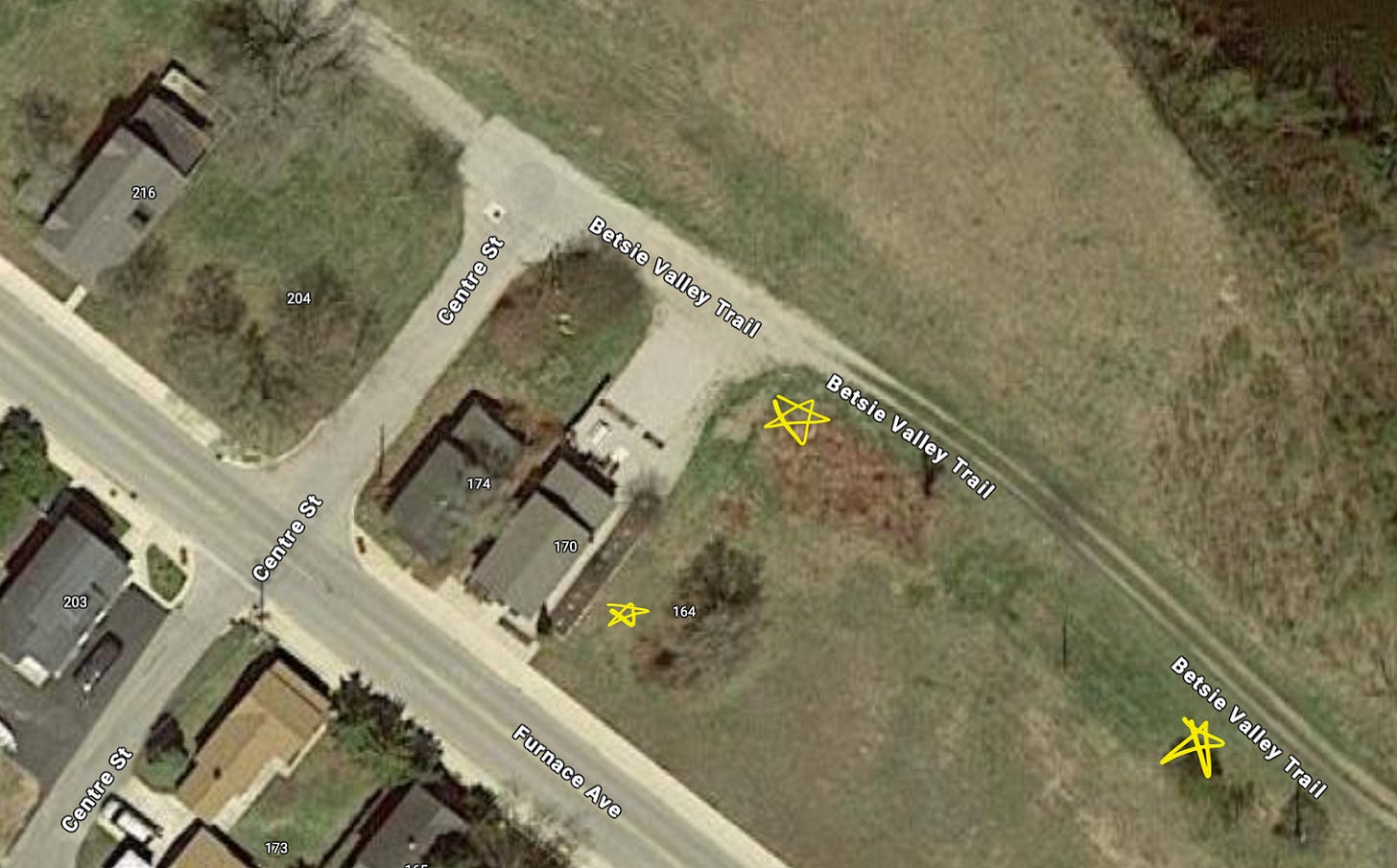Knotweed Treatment Begins in Elberta
The Northwest Michigan Invasive Species Network (ISN) began treating invasive Japanese knotweed on June 27.
A crew from the Northwest Michigan Invasive Species Network (ISN) began treating invasive Japanese knotweed in Elberta on June 27.
I wrote a short few sentences about Japanese knotweed earlier this summer in the Alert, but a quick refresher: It’s a plant of dragon-tail-like shoots that create a dense thicket that crowds out other plantlife. It evolved alongside volcanoes, so it’s able to grow up through stone and has been known to break through foundations. For those reasons, it’s on ISN’s Top 12 priority list of species to manage.
ISN is treating knotweed throughout Elberta and the surrounding area, including on a village easement as marked roughly below. Because of this, the Village is paying for this first round, Village trustee Brett McGregor confirmed in a text.

Sidenote: One of these is also the stand of knotweed that swallowed a bowling ball that was for some reason there when I moved here three years ago. I am excited to see if the bowling ball resurfaces.
Because of the way knotweed evolved, herbicides are the most effective control option.
“I know a lot of people are anti-herbicide, and I totally understand why people are hesitant to use them. However, there is a time and place for them, and knotweed is certainly one!” wrote ISN coordinator Audrey Menninga in an email to me. “These plants are incredibly resilient, with roots that can go up to 10 feet deep and rhizomes that may spread up to 30 feet from the main plant. Cutting encourages growth, as does digging, even if the entire root system could be removed.”
The treatment generally takes about five to seven years and consists of two phases per year: The first is spraying the plants with Milestone, whose active ingredient is aminopyralid. The ISN crew yesterday was careful to avoid a nearby arbor vitae that could be damaged by this chemical.
The second phase will happen in August, and consists of spraying a mix of Clearcast (imazamox) and Aquaneat (glyphosate), according to Menninga. The concentration of glyphosate in the mix is generally lower in first applications when the knotweed is still producing flowers “to be mindful of pollinator populations who may be visiting the flowers,” Menninga wrote.
Menninga wrote that ISN uses a mix of chemicals because “plants can develop resistances to chemicals (much like viruses can develop resistances to antibiotics), so we like to try and mix up the chemicals that we hit the knotweed with, to reduce that possibility.”
Residents should watch out for ISN warning notices like the one in the picture at the top of this post, be careful not to wander into those patches, and keep any pets from those patches, Menninga wrote. The herbicides are also mixed with a blue dye as a further visual cue, though when I wandered over today the blue tint was barely noticeable.
Residents who want to manage knotweed on their own property can reach out to ISN Habitat Management Specialist Luke Kreykes, who patiently answered all my questions yesterday morning when stopping by to alert me that treatment was starting. ISN can help homeowners figure out the right plan for their site.






Fine that you are after knotweed. Earlier in April I was alerted to the invasive Garlic Mustard which had taken hold on my property. I pulled five 30 gallon bags and had sore fingers, back and knees. So I visited Benzie Conservation in Beulah. They suggested suppression with a black plastic tarp which i tried at a cost of $127 per tarp. They also suggested chemical spray with a poison ivy spray which dissipates in 30 days. It worked after 10 gallons at $30 per gallon. Better than using ROUND UP, which also works. I do not need CANCER or PARKINSONS DISEASE. Surprising how many local folks are still spraying ROUND UP. Guess they are protected by watching FOX NEWS. Q